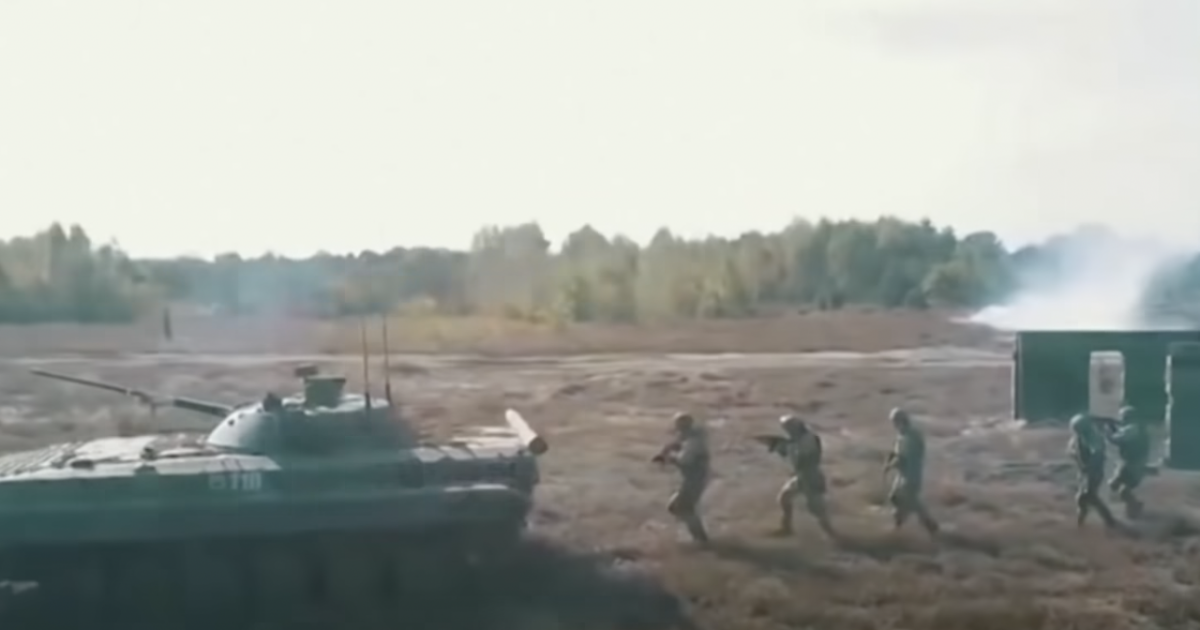
However, with how zealous the US is becoming with its foreign policy, Belarus may have no choice but to enter the Russian orbit.
On September 10, 2021, Russia and Belarus launched a massive military drill that involved 200,000 troops consisting of 800 tanks, 15 warships, and 80 aircraft, per a report by the Russian defense ministry.
Tyler Durden highlighted that the “Zapad-2021” exercises are “taking place jointly at nine Russian and five Belarusian ranges and bases, with close to 13,000 Russian troops being hosted on Belarusian soil.” In comparison, NATO’s most recent exercise of notable size in Europe, Trident Juncture 2018, only featured 40,000 troops.
According to the Russian Defense Ministry, the goals of the exercises were to review the preparedness of Belarusian and Russian military forces’ ability to guarantee military security and territorial integrity.
The Russian Defense Ministry also revealed that the recent military drills featured the militaries of Armenia, India, Kazakhstan, Kyrgyzstan, and Mongolia.
On top of that, the Russian military noted that drills will test “interaction during combat operations and letting commanders and staff practice troop management during joint actions in repelling aggression against the Union State.” The Union State referred to the 1999 agreement the two countries forged with the intent of promoting deeper political and economic integration.
NATO was rather disquieted by not being invited to watch these drills and called on Russia and Belarus to “act in a predictable and transparent way” per a statement from a NATO spokeswoman. The spokeswoman added, “This is especially important when there is increased military activity along our borders, to reduce risks and avoid any accidents or incidents.”
Michael Kofman offered his take regarding the Russia-Belarusian exercises at War on the Rocks:
The Russian General Staff is concerned by what it has nicknamed a Western “Trojan horse” strategy: first using indirect means to destabilize a country, then employing advanced conventional capabilities to paralyze the armed forces, execute massed airstrikes against critical infrastructure, and rapidly achieve war aims. The Russian military goal is to convince a U.S.-led coalition that it cannot achieve a decisive victory early on, and that the war will result in substantial military, or economic costs, along with likely nuclear escalation. Russian thinking is premised on the belief that Russia can raise costs to a level that will outweigh the gains sought, particularly in a fight over Belarus. The 2021 exercise may simulate calibrated employment of conventional and non-strategic nuclear weapons to manage escalation and compel the opposing coalition to negotiate.
Robert Lee, an analyst of Russian military affairs, believes that such joint military drills are designed to prepare against future Color Revolutions. Lee noted: “We know that Russia has wanted to expand its military footprint in Belarus, and this exercise may give us an indication of what Belarus would allow.”
“It could also involve greater integration of Russian and Belarusian military and security services to put down a Color Revolution-type scenario in Belarus,” the analyst continued.
Under the leadership of strongman Alexander Lukashenko, Belarus has charted an interesting political path since the Soviet Union dissolved. At one point, Lukashenko was onboard with the creation of the Union State — a treaty agreement comprising Russia and Belarus that originally attempted to unite both states into one political entity. In fact, there were rumors that Lukashenko was angling to be leader of said political body — a move which would have involved Belarus effectively annexing Russia. However, when Vladimir Putin assumed the role of prime minister in 1999, the idea of Union State integration, especially one that would be potentially led by Lukashenko, was shelved.
Since then, Lukashenko has pursued a multi-vector foreign policy approach to dealing with Russia and the US, whereby his government tries to obtain benefits from both actors without having to fully commit to one side. This has irked Russia, which views Belarus as a territory that’s in its traditional sphere of influence. The US and European Union have been annoyed by Belarus simply due to its authoritarian nature. These are political entities who are obsessively trying to nudge countries into accepting “liberal democratic” rule.
At this point, Belarus might as well side with Russia. The Eurasian behemoth is not the one that’s engineering Color Revolutions or trying to bring degenerate cultural practices to Belarus.



